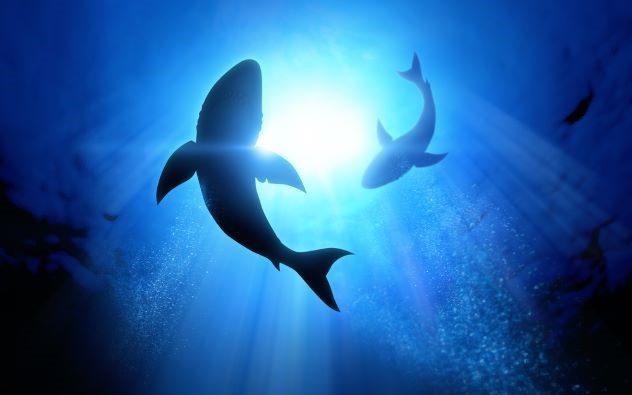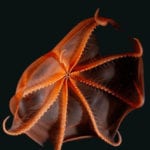 History
History  History
History  Animals
Animals Ten Times It Rained Animals (Yes, Animals)
 Mysteries
Mysteries 10 Devastating Missing Child Cases That Remain Unsolved
 Creepy
Creepy 10 Scary Tales from the Middle Ages That’ll Keep You up at Night
 Humans
Humans 10 One-of-a-kind People the World Said Goodbye to in July 2024
 Movies and TV
Movies and TV 10 Holiday Movies Released at Odd Times of the Year
 Politics
Politics 10 Countries Where Religion and Politics Are Inseparable
 Weird Stuff
Weird Stuff 10 Freaky Times When Famous Body Parts Were Stolen
 Miscellaneous
Miscellaneous 10 Interesting Things Manufacturers Stopped Making and Why
 Gaming
Gaming 10 Funny Tutorials in Games
 History
History 10 Desperate Last Stands That Ended in Victory
 Animals
Animals Ten Times It Rained Animals (Yes, Animals)
 Mysteries
Mysteries 10 Devastating Missing Child Cases That Remain Unsolved
Who's Behind Listverse?

Jamie Frater
Head Editor
Jamie founded Listverse due to an insatiable desire to share fascinating, obscure, and bizarre facts. He has been a guest speaker on numerous national radio and television stations and is a five time published author.
More About Us Creepy
Creepy 10 Scary Tales from the Middle Ages That’ll Keep You up at Night
 Humans
Humans 10 One-of-a-kind People the World Said Goodbye to in July 2024
 Movies and TV
Movies and TV 10 Holiday Movies Released at Odd Times of the Year
 Politics
Politics 10 Countries Where Religion and Politics Are Inseparable
 Weird Stuff
Weird Stuff 10 Freaky Times When Famous Body Parts Were Stolen
 Miscellaneous
Miscellaneous 10 Interesting Things Manufacturers Stopped Making and Why
 Gaming
Gaming 10 Funny Tutorials in Games
Ten Times the Military Fought Sea Creatures
Life and even war at sea have forced nature and man into strange and dangerous relationships. Throughout history, the military has encountered various sea creatures during their operations, experiences that have created respect and fear for our oceans. From close-quarter encounters with predators to previously unexplained phenomena that have advanced scientific understanding, there have been times when the military went to war with sea creatures and times when they fought back.
History is riddled with sea monsters of old; however, myth and legend do not come into this discussion. These are ten real-life examples of when fighting forces of the world were pitted against beasts from the deep.
Related: 10 Oddities That Interrupted Military Battles
10 The Gulf of Tonkin
The Vietnam war was initiated after a confrontation between the United States and North Vietnamese warships in 1964. At the center of this complex interaction was the USS Maddox. One night, 380 shells were fired, and several depth charges were dropped to destroy North Vietnamese torpedo boats. However, air support reported seeing no boats.
A sonar engineer recounted the events of the night to marine biologist Todd Newberry in 1966. The objects on the radar appeared as torpedoes, but they acted very strangely, as though they had a mind and will of their own. Newberry’s theory was that these were rare animals known as pyrosomes.
Pyrosomes are an organism made of thousands of individuals, creating a large floating structure, see-through in nature and up to 60 feet (18 meters) in length. Imagine a giant tube-like jellyfish without any tentacles. Not only do they appear on sonar, but they can also be seen at a distance by the bright light they emit.
This is what gives them the name pyrosomes, which means fire body. This accounts for the reports of lights on that fateful evening, which were confused as enemy cockpits and searchlights.[1]
9 USS Stein Squid Incident
In 1978, the USS Stein, a United States Navy frigate, was performing special operations at an undisclosed location in the Pacific Ocean. Its system responsible for identifying submarine threats suddenly went unserviceable. The ship was forced back to the dock, where it was discovered that the sonar system had large slashes measuring four feet (1.2 meters) in length; within the cuts, large teeth were found.
On closer inspection, the teeth-like structures were identified as claws from a squid’s suction cup. The largest squid discovered by scientists was almost 43 feet (13 meters) long and weighed over 2,000 pounds (907 kilograms). The claws taken from the USS Stein are said to belong to a squid more than three times this size.
Navy biologist F.G. Wood, who investigated the claws, could not rule out the possibility this was an undiscovered species new to science. The largest species of squid are hunted by sperm whales, and these whales are frequently observed with large wounds and scars, damage similar to the sonar system. These two animals readily fight one another, so this giant squid may have mistaken the ship for a whale.[2]
8 Sharks in WWII

At the beginning of the 1940s, at the peak of the Second World War, shark attacks were considered by the research and development branch of the US Navy. It was concluded that sharks were not interested in “strange objects” floating in the sea and an “insignificant danger to personnel.” A sinking vessel would be coupled with loud commotion, which was incorrectly assumed to drive sharks away.
The truth is that sharks had not been encountered in earlier wartimes. The naval engagements of WWI were fought in freezing waters. It was not until the naval battles of WWII in tropical waters that sharks became an issue.
In the case of Lieutenant Arthur George Reading, who survived the crash landing of his plane at sea with Radioman Everett Hardin Almond, sharks were most definitely an issue. After crashing in 1943, Reading described how he spent 16 hours fighting off sharks with his binoculars. He watched Almond become wounded; a cloud of blood filled the water, and five sharks repeatedly attacked him, tearing apart his leg. While Reading tried to keep his companion afloat, lashing out with his binoculars, he was struck by a tail, breaking his jaw. They were separated, and Almond was overcome and killed.[3]
7 The Worst Shark Attack in History
The USS Indianapolis was a U.S. Navy cruiser that was sent on a mission in 1945 to deliver enriched uranium for the atomic bomb, “Little Boy.” After completing its mission, it departed for the Philippines carrying a crew of 1,195. Shortly after midnight, it crossed paths with a Japanese submarine which fired upon and sank the ship in 12 minutes.
Three hundred sailors went down with the ship, leaving the remaining crew of 900 adrift in the open ocean. Unfortunately for those lucky enough to survive the initial attack, this was just the beginning of their problems at sea.
Hundreds of sharks were drawn to the wreckage by the noise of the explosions, the scent of blood, and the thrashing of bodies in the water. After picking off the dead and wounded, they began attacking the survivors. Using whatever they had handy, the sailors fought off constant attacks from oceanic whitetip sharks for three and a half days before they were rescued. Between dehydration, exposure, and some sailors choosing suicide rather than face the sharks, only 316 remained when the rescue boats arrived.[4]
6 Military Attack Dolphin
Dolphins and whales have been used by several militaries since the early 1960s. With training, they can carry out many useful tasks, such as delivering tools and identifying torpedoes and mines. Dolphins can be trained to remove facemasks from divers, forcing them to the surface.
Alternatively, it can tag them, deploying a floating buoy or attaching a clamp to their leg, whereby a boat can quickly reel them in. Rumors indicate that dolphins can be fitted with a face harness to which a choice of lethal options can be fixed, including pistol “bangsticks” and the explosive gas injecting “wasp knife.”
Most recently, in Palestine, evidence has been supplied by Hamas showing a dolphin face harness that has a speargun attachment. According to Hamas, this belonged to an Israeli dolphin referred to as a hostile aquatic unit that chased one of their divers.[5]
5 UB-85 Sea Monster
On April 30th, 1918, Captain Günther Krech and his crew were captured by the British warship, the HMS Coreopsis. When questioned, Krech told the British his submarine was damaged and not able to dive, claiming the sub had received damage during an attack from a sea monster. The creature was described as horned, with small, deep-set eyes, masses of monstrous teeth, and a small head. The huge and admittedly odd-looking creature climbed onto the vessel, causing it to take on water.
However, with the release of records, the truth has been revealed. A crew member named Göttschammer recalls how Kretch had been chilly and insisted on a heater being fitted to the officers’ compartment. This required running cabling from the sub through the main hatch, which meant it could no longer be properly sealed.
When the British warship was sighted, the hatch was ordered shut, and the sub was put into a dive. Unfortunately, the hatch immediately failed, filling the U-boat with seawater. It caused the sub to resurface, leaving the crew no choice but to surrender. And thus, the sea monster was born; out of shame and incompetence.[6]
4 Russian Arctic Expeditions

A vast amount of Russia lies within the Arctic Circle, and military and research activities there are facilitated by a section of the Russian navy called the Northern Fleet. Landing on many of the islands—if you are even able to—you will immediately come face to face with hungry bears.
Leonid Kruglov, a Russian reporter, recalls the expedition to Alexandra Land. “The beast began to pursue us, not retreating a single step. He did not react to rocket launchers, screams, shots in the air.” Intense hunger has driven the bears to ignore basic instincts in the pursuit of food.
However, when they attempted to land on another island in 2019, it was not bears that caused a problem but walruses. A large male can weigh the same as a Dodge Charger (4,400 pounds or 1,995 kilograms). Before the landing craft could reach Wilczek Island, it was intercepted by an angry walrus.
It was suspected that this was a mother walrus attempting to protect her young. The walrus managed to board and sink the small boat. Luckily, the crew was close enough to land for everybody to make it safely to shore. They were then rescued by the well-coordinated actions of the Northern Fleet servicemen.[7]
3 Attacks on Nuclear Submarines
During the 1970s, Ohio-class submarines were an integral part of America’s nuclear deterrent triad—the land, air, and sea delivery system for atomic warfare. If the Cold War ever decided to warm up, the Ohio class was ready. Even today, they are the largest ever submarine built by the U.S. Navy, weighing 18,750 tons (17,000 metric tons) and costing billions.
While at sea, sporadic issues begin to appear with the subs: damaged sonar domes, electrical cables, sound probes, and leaking oil lines. There was a concern Russia had generated special technology that could sabotage equipment all while escaping detection.
However, the true saboteur measured about 18 inches (46 centimeters) and was certainly not Russian. Latching onto much larger prey, the cookiecutter shark removes lumps of flesh. We have known about the presence of its bite mark for a long time, with large fish like tuna often being hauled in by fishermen with circular wounds.
Although it was not until the 1970s that the stomach contents of these peculiar animals revealed conical plugs of flesh it had extracted from its prey. Today, submarines protect their soft spots with hard fiberglass housings.[8]
2 HMS Brilliant Fires on Whales
In the Falklands War, fought in 1982, the British sent a fleet to the South Atlantic, including the anti-submarine frigate HMS Brilliant, to protect their aircraft carriers from Argentinian attack. In this area, whales are common and posed a significant problem for the crew. Their large echoes on sonar were often mistaken for submarines. With tensions high, torpedoes were fired from the boat, which killed the first two whales. Air support was launched from the ship, and a third whale was killed by a helicopter.
Torpedoes were often launched in response to submarine-like signatures that could easily have been whales. Not only did they play havoc with their sonar systems, but they also posed a risk to the boats themselves. Twelve months into its campaign, the ship collided with a whale, causing damage to its hull and requiring it to return for repairs. Many other ships collided with whales causing similar damage. It would seem whales were everywhere and became a significant risk and casualty of war.[9]
1 War on Orcas
It is hard to believe, but even in the recent past, orcas were hated by humans, driven by inaccurate information, folklore, and legends that portrayed them as vicious creatures. Until the 1970s, the U.S. Navy trained their divers to avoid orcas at all costs, as they would take any opportunity to attack a human at sea. And while it is true these so-called killer whales are natural-born predators capable of taking down blue whales, there has never been a recorded attack on a human by wild orcas.
In 1956, the Icelandic government requested assistance from the U.S. Navy in addressing the issue of orcas preying on their herring fishery. The U.S. responded by dispatching an anti-submarine air squadron equipped with 50-caliber machine guns, aircraft rockets, and depth charges to target the orcas.
Similarly, in British Columbia, salmon fishermen lobbied their government to install heavy artillery guns on hillsides overlooking the inland waterways. It was not until we began to keep orcas in captivity that we realized they were friendly, intelligent creatures.[10]








